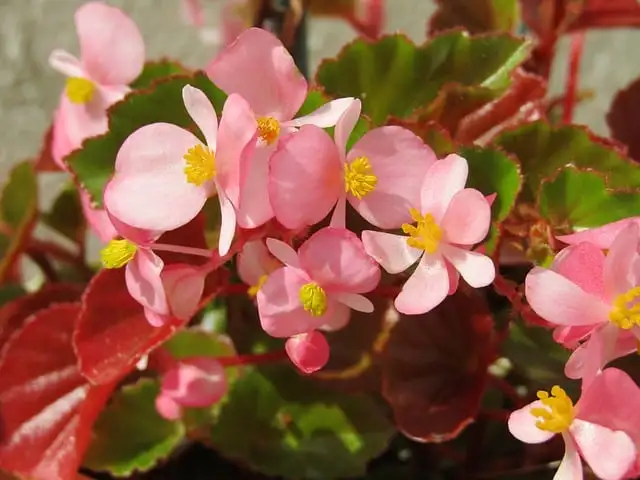Introduction
Begonias, known for their vibrant blooms and versatility, are popular choices for gardens and containers. This expert guide provides comprehensive instructions on cultivating healthy begonia flowers, drawing insights from reputable horticultural bodies and academic experts.
Importance of Growing Begonias
Begonias are prized for their wide range of colors, shapes, and adaptability to different growing conditions. Whether for bedding, borders, or hanging baskets, begonias offer year-round beauty, and this guide will help you unlock their full potential.
Getting Started
Choosing Begonia Varieties
Refer to recommendations from the American Begonia Society and the Royal Horticultural Society to choose begonia varieties suited to your climate and preferences. Different types, including tuberous, fibrous-rooted, and rhizomatous begonias, have specific care requirements.
Climate and Soil Conditions
Determine the ideal planting time for begonias based on your region’s climate. The USDA plant hardiness zone map provides valuable information. Begonias thrive in well-drained, slightly acidic to neutral soil. Conduct a soil test to ensure optimal pH levels.
Propagation Methods
Explore propagation methods such as seeds, tubers, or cuttings. Academic experts from reputable institutions often provide guidelines for successful begonia propagation. Select a method that suits your preferences and resources.
Planting Begonias
Indoor Starting
For early blooms, start begonia seeds or tubers indoors. Use a well-draining potting mix and maintain a temperature of around 70°F (21°C). Transplant seedlings or tubers outdoors after the last frost, following the recommendations of academic experts.
Outdoor Planting
Plant begonias in a location with filtered sunlight, as direct sunlight may scorch the leaves. Follow spacing guidelines provided by horticultural experts to ensure proper air circulation and prevent diseases.
Watering and Feeding
Keep the soil consistently moist but not waterlogged. Water begonias early in the day to allow foliage to dry before evening. Fertilize regularly with a balanced, water-soluble fertilizer, following guidelines from experts to promote healthy growth.
Maintenance and Care
Pruning and Deadheading
Regularly deadhead spent flowers to encourage continuous blooming. Prune leggy or overgrown begonias to maintain a compact and bushy shape. Consult with local agricultural extension services for region-specific pruning tips.
Pest and Disease Management
Monitor begonias for pests like aphids and diseases such as powdery mildew. Utilize integrated pest management strategies recommended by government agricultural bodies to minimize the use of pesticides and protect the environment.
Conclusion
Growing begonia flowers is a gratifying endeavor that adds color and elegance to your garden. By following this expert guide and referencing resources from government bodies, horticultural societies, and academic experts, you can cultivate thriving begonias. Stay informed about regional conditions and adapt your care routine for the best results.
What is the best time to plant begonia flowers?
Answer: The ideal time to plant begonia flowers depends on your region’s climate. Refer to the USDA plant hardiness zone map and plant after the last frost, ensuring the soil is consistently above 50°F (10°C).
Can I grow begonias from seeds, and how should I start them indoors?
While possible, most gardeners prefer starting begonias from tubers or cuttings. If starting from seeds, use a well-draining potting mix indoors and transplant after the last frost. Follow academic expert guidelines for seed germination.
What type of soil do begonias prefer?
Begonias thrive in well-drained, slightly acidic to neutral soil. Conduct a soil test and amend as needed to achieve the optimal pH level of around 6.0 to 7.0.
How much sunlight do begonias need?
Begonias prefer filtered sunlight. Plant them in locations where they receive indirect sunlight, as direct sun can scorch the leaves. Morning sunlight is usually ideal.
Do begonias require special care during winter?
Tuberous begonias should be lifted and stored indoors during the winter, while fibrous and rhizomatous types can be treated as perennials in milder climates. Follow regional guidelines and recommendations from horticultural bodies.
How often should I water my begonia plants?
Keep the soil consistently moist but not waterlogged. Water early in the day to allow the foliage to dry before evening. Adjust the frequency based on local climate conditions.
Can begonias be grown in containers, and what are the key considerations?
Yes, begonias can be grown in containers. Ensure the containers have drainage holes, use a well-draining potting mix, and provide the appropriate amount of sunlight. Follow guidelines from horticultural experts for container gardening.
Are there specific pests and diseases that affect begonias?
Begonias can be susceptible to pests like aphids and diseases such as powdery mildew. Implement integrated pest management strategies recommended by government agricultural bodies to address these issues.
What is the recommended feeding schedule for begonias?
Fertilize begonias regularly with a balanced, water-soluble fertilizer. Follow guidelines provided by academic experts, typically applying fertilizer every 2-4 weeks during the growing season.
How do I encourage continuous blooming in my begonias?
Regularly deadhead spent flowers to promote continuous blooming. Additionally, provide proper care, including adequate water, sunlight, and fertilizer, to ensure healthy and vibrant begonias throughout the growing season.
